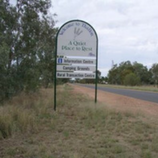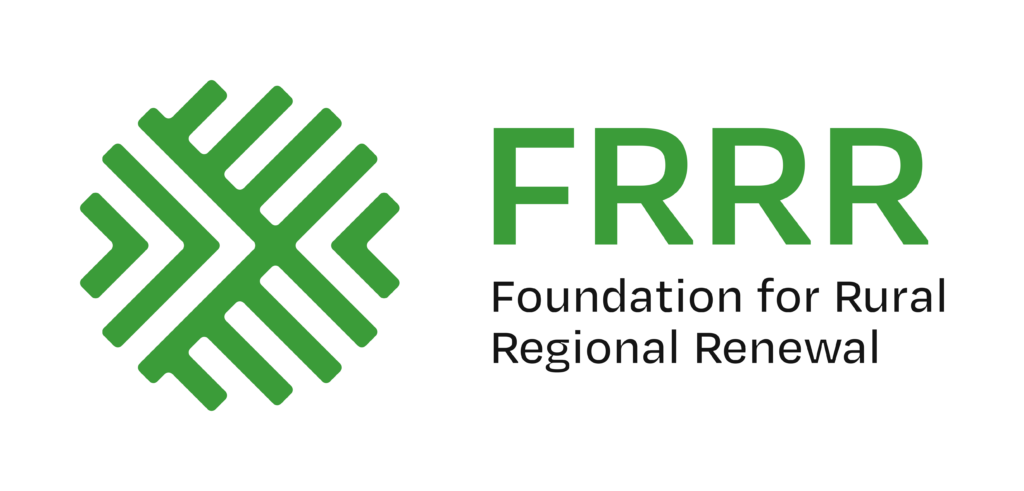Foundation for Rural & Regional Renewal (FRRR)
$175,000 available to bring youth-led initiatives to life
FRRR is inviting remote, rural and regional community groups apply for grants of up to $10,000 to help fund projects that provide innovative solutions to five priority issues identified by participants at the inaugural Heywire Youth Ideas Lab, held recently in Broken Hill.
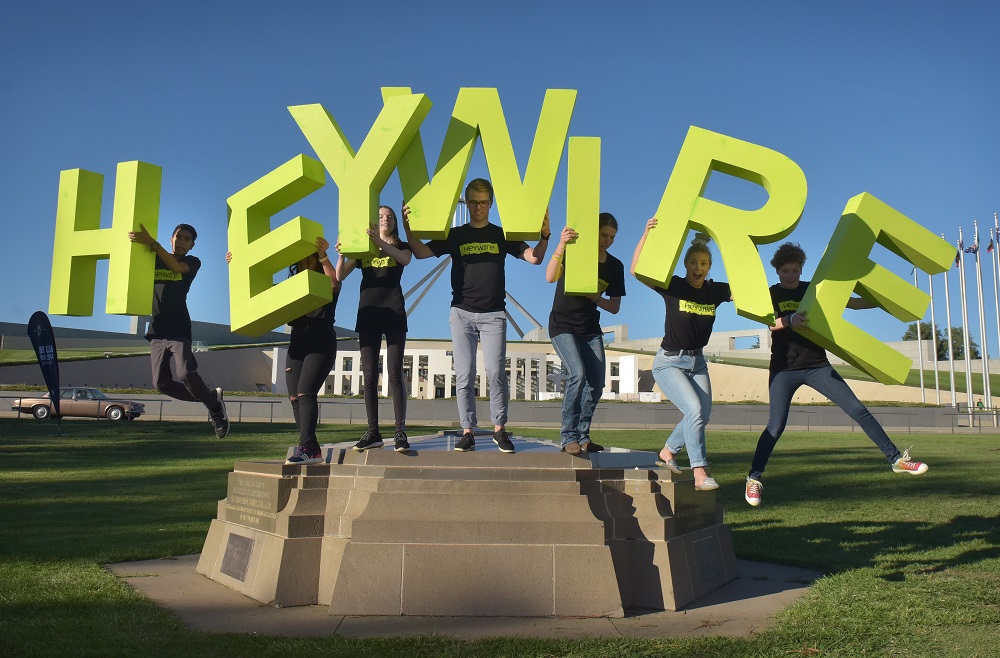
Since 2013, the FRRR ABC Heywire Youth Innovation Grants program has supported remote, rural and regional youth to address issues that matter most to them. To date, more than $1 million in community and philanthropic investment has helped to fund more than 130 projects in over 160 communities.
This year, due to COVID-19, the ABC needed to pivot their approach to how the ideas were generated. Typically, they come from the annual Heywire Youth Summit in Canberra, but instead, over three days 27 young local leaders from Broken Hill and surrounding regions came together. Broken Hill was chosen as the host town because it had the most entries in the annual Heywire story-telling competition. The young leaders learnt new skills, shared their stories, and workshopped ideas to help make rural and regional Australia an even better place for young people to live and work.
These ideas now form the basis of the FRRR ABC Heywire Youth Innovation grants, and include:
- Discover Your Future: Giving young people a chance to explore and learn more about their future career options.
- Open Field Fest: Bringing music, art and people together to help create a community-run music and arts festival.
- Support Squad: Training young leaders to provide support, knowledge and companionship to peers who may be struggling with a variety of challenges.
- The Story Link Project: Tackling discrimination through sharing diverse stories that help people within regional communities understand the impact of discriminatory language.
- Contribute to the Change: Helping young people improve their mental health knowledge and understanding, so they are confident to seek the help they need.
Natalie Egleton, FRRR’s CEO, said each year she is impressed by the ideas that Heywirers bring to the table, and this year is no exception.
“The five ideas developed by Broken Hill’s young people are insightful and meaningful and provide a snapshot of the issues currently faced by young rural people across Australia. The beauty of the FRRR ABC Heywire Youth Innovation Grants is that they fund projects driven by these young Australians’ ideas.
“We encourage community groups to engage with local youth when considering which idea to adopt and adapt. These capable young leaders understand local context and can help adapt an idea to best suit the priorities of local youth and assist in leading a meaningful project that will make their community more inviting and inspiring for other young people to live and work,” Ms Egleton said.
Youth Ideas Lab and Heywire participant Ashlyn speaks of how proud she is of herself and her Broken Hill community for coming up with the five ideas which were designed to combat challenges they themselves have faced.
“The Youth Ideas Lab was such an incredible and inspiring experience. I’m so glad our Broken Hill community was given the opportunity to come up with these ideas that will soon be turned into realities. These ideas were formed by our unique experiences; now it’s your chance to take them on in your own community. I can’t wait to see where they go and how they grow!”
This program is possible thanks to the generous support of FRRR’s donor partners, including The Sally Foundation, Erdi Foundation, Findex Community Fund, David Mactaggart Foundation, and private donors. This year, thanks to their generosity, $175,000 in grants is available.
Applications close Thursday, 19 August 2021 and recipients will be announced in early November. More information is available here.
Warddeken, an Aboriginal owned not-for-profit company, combines traditional ecological knowledge with Western science to manage and protect one of Australia’s most unique environments.

Arnhem Land covers 97,000 sq km of the top end of the Northern Territory.
During the second half of the twentieth century, many Traditional Owners were encouraged to move away from either remote parts of Arnhem Land and join missions, or larger communities to search for more ‘traditional’ work opportunities.
As a result, many parts of the area were left without people and ‘Country was orphaned’ – the term used for land without its people.
Over a number of decades fine-scale fire management was replaced by raging yearly wildfires, feral animals and invasive plants severely impacting the native species.
The plants and animals that make up the local ecosystems had previously evolved to rely on Bininj (the Aboriginal people of Western Arnhem Land), however the disruption in traditional Indigenous land management diminished the ecosystem and led to plummeting numbers of small to medium–weight mammals. This included culturally important species like djabbo / northern quoll and bakkadji / black-footed tree-rat. Refugia, including rainforest patches shrunk and fresh-water places were destroyed.
Getting things back on track
Warddeken is an Aboriginal-owned, not-for-profit company that combines traditional ecological knowledge with Western science to manage and protect one of Australia’s most unique environments.
Warddeken operates out of the remote homeland communities of Kabulwarnamyo, Manmoyi and Mamadawerre in west Arnhem Land. Each year up to 180 Indigenous rangers work on a variety of projects including fire management and carbon abatement, invasive weed and feral animal control, rock art conservation, education and cultural heritage management.
In 2010 Aboriginal Elders from the Warddeken and Djelk IPAs established the Karrkad-Kanjdji Trust to seek philanthropic sources of funding for land management and cultural projects.
Last year, they received a $15,000 Seeds of Renewal grant from ANZ and FRRR to help fund a network of cameras that look into the prevalence of djabbo (northern quoll) on the land to understand the impact of its own land management practices and programs on this priority mammal species.
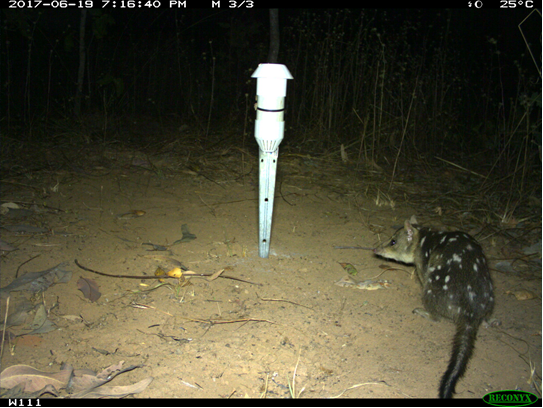
Curbing the decline
Djabbo populations identified by the monitoring project are actively considered in annual early burning and wildfire suppression activities, and are targeted for further investigation for the purposes of building population resilience.
With meaningful involvement and employment of landowners and rangers, Warddeken will seek to define quoll and major predator feral cat population density and distribution to inform the design of predator suppression strategies if required.
Indigenous rangers, living and working on Country, are best placed to curb the decline in native biodiversity loss and improve habitat for future generations.
Rangers in West and Central Arnhem Land tirelessly blend Indigenous ecological knowledge and western science to control threats and help native species begin to thrive in their natural environment.
CEO of Karrkad Kanjdji Trust, Stacey Irving says “Warddeken’s vision is to have healthy people living and working on healthy country. The generous support of the ANZ Seeds of Renewal program is helping rangers care for species like the Djabbo.’’
Terrah Guymala, Senior Warddeken Ranger adds, “When we, Bininj people, see animals, we get excited because they play a big role in our life through our ceremonies.
“This year we have seen lots of animals that we love, but we hope this number increases so we can physically show our children rather than relying on rock art to tell the stories,” Terrah says.
ANZ General Manager Business Banking Jenefer Stewart says the ANZ Seeds of Renewal program has been providing grants for important initiatives in regional and rural Australia for nearly 20 years.
“Each year I look forward to seeing the difference the grants are able to make in these communities, many of which find it difficult to access the resources they need to grow, develop and prosper,” she says.
Written by Karly Dwyer, ANZ
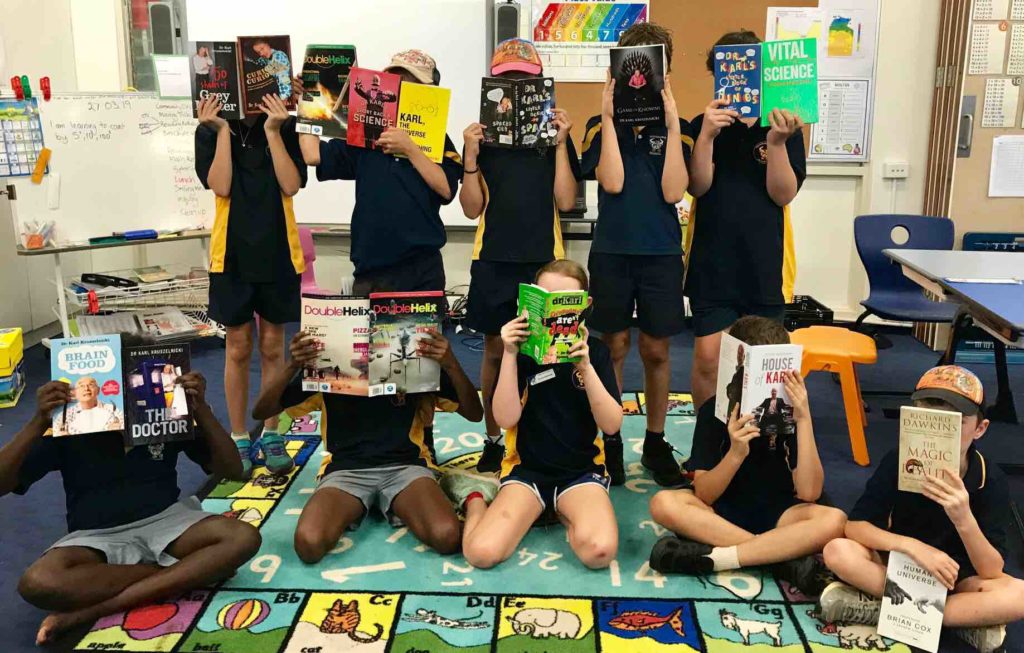
Did you know that some schools in remote Australian communities might have as few as 15 books in their library?
That discovery in 2017 prompted Corey Tutt to start sourcing and supplying resources himself, initially from his personal library. DeadlyScience Limited was established in 2020, and is now a registered charity. Through DeadlyScience, Corey is seeking to inspire a new generation of scientists.
It focuses on providing Science, Technology, Engineering, and Mathematics (STEM) and early learning reading resources to remote Australian schools to help increase engagement.
The initial priority is schools with a high proportion of Indigenous children. Where possible, and appropriate, DeadlyScience sources materials from Indigenous authors, artists, and translated versions in Indigenous languages. In the three and a bit years since inception, DeadlyScience has had more than 110 schools requesting resources.
They have delivered more than 16,000 books, 500 telescopes (and basic science kits), 80 educational resources and six greenhouses (plus seeds, and educational materials to support food production projects) to more than 100 Australian schools and/or communities.
This growth looks set to continue as the organisation gains more momentum and profile. Another key activity involves maintaining a website to support teachers in remote schools with access to high quality scientific research and relevant experts in their fields (also of Indigenous background, where possible).

In 2020, DeadlyScience partnered with FRRR to set up a Not-for-Profit Fundraising Account, allowing them to attract tax deductible contributions from a broad range of donors to expand their activities and support the overall capacity and operations.
You can add your support by donate securely online, or check out the DeadlyScience website to learn more about their work.
To learn more about opening a Not-For-Profit fundraising account, get in touch with Jo Kemp.
The Foundation for Rural & Regional Renewal (FRRR) has entered a new three-year partnership with the Kellogg Australia Charitable Foundation (KACF).
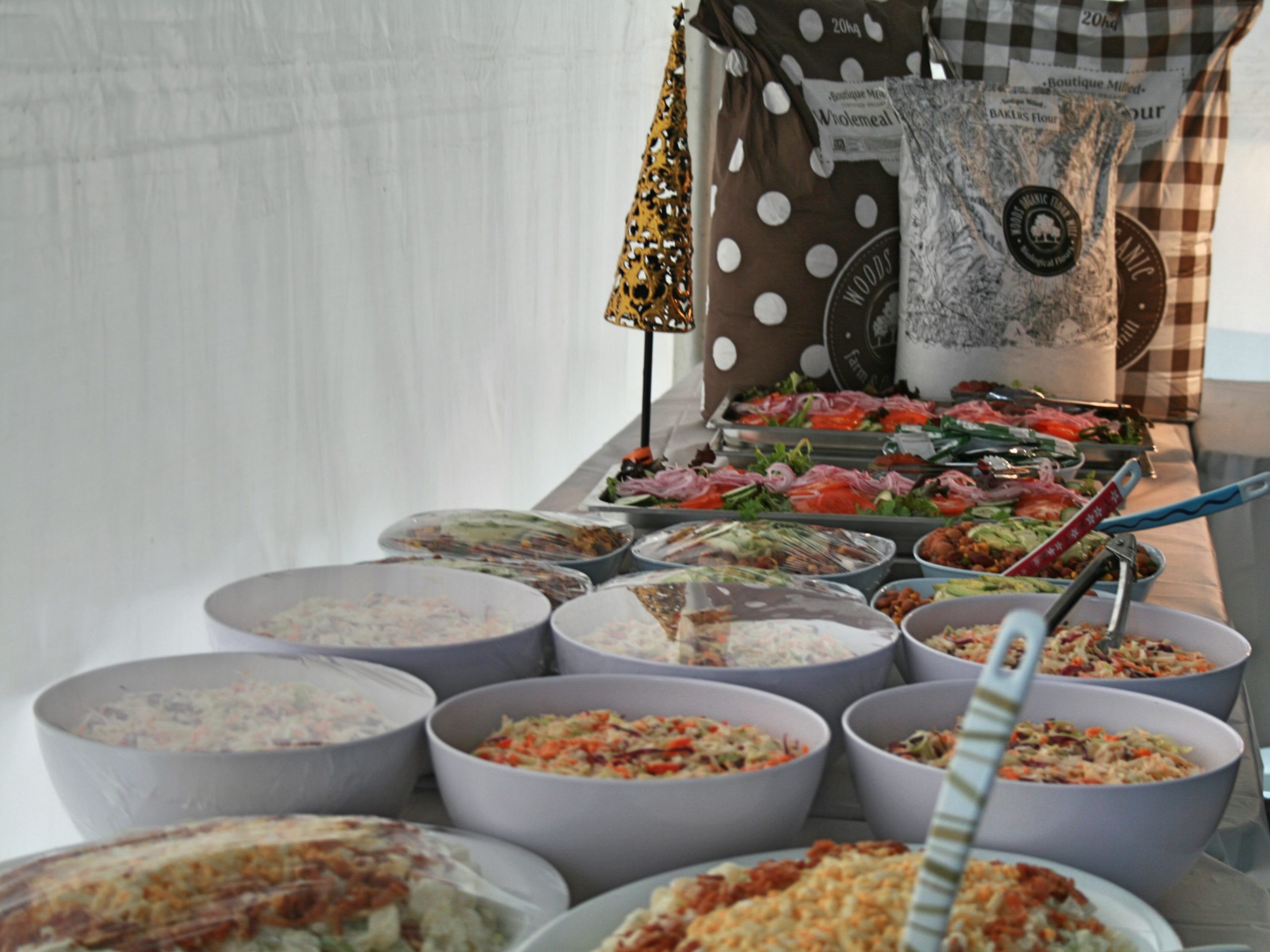
Creating better days for Australians, Kellogg Australia is committed to tackling hunger and helping to create a more sustainable future for generations to come. Now, with the new partnership between KACF and FRRR, their combined efforts can help tackle hunger and build resilience in vulnerable rural and regional communities throughout the country.
Over the course of the partnership, KACF will donate $300,000 to support grants going towards low socio-economic regions in need, and disadvantaged communities facing high levels of food insecurity.
The funds will be part of FRRR’s Strengthening Rural Communities program, which aims to give small remote, rural and regional communities across Australia an opportunity to access funding to strengthen their vitality and resilience. Grants are flexible and respond to community-identified priorities, such as food security.
In addition to the KACF funding, Kellogg Australia has also put forward in-kind support in the form of food donations, as well as skilled and unskilled volunteering from its employees.
Esme Borgelt, Managing Director Kellogg Australia, said, “The last couple of years have seen so many of our communities facing increasingly difficult times. From droughts to bushfires to a global health pandemic, the impact on everyone has been significant, and those hardest hit have been our remote, rural and regional communities.
“Almost a quarter of Australians experiencing food insecurity live in regional or remote areas and the aim of the KACF partnership with FRRR is to provide support at a grassroots level to help these communities implement innovative, locally led solutions.”
With FRRR being the only national foundation centred on social and economic strength in remote, rural and regional Australia, the partnership will help to tackle food insecurity with the knowledge and experience of the local needs by local leaders on the ground.
Natalie Egleton, FRRR’s CEO, said, “It’s fantastic to see a leading global food manufacturer like Kellogg’s make it their overarching mission to leave a mark of meaningful difference. We are delighted to be partnering with them to ensure that support reaches vulnerable communities beyond metropolitan boundaries.
“While the grants will be awarded based on locally identified community priorities, there will be a focus on supporting food security initiatives and enterprises, food affordability and food access programs, as well as projects such as community gardens and school and educational food programs,” Ms Egleton explained.

Clarence Landcare is located in regional NSW. Their mission is to promote sustainable land, agriculture, water, vegetation and biodiversity management practices and principles to their local community.
The largely volunteer-run organisation has been taking care of the land in the region for more than two decades. They regularly running community projects and initiatives focused on sustainable land care. The team also hosts workshops at their head office to educate and engage the wider community.
Located in the main street of Grafton, the Clarence Landcare office is in the 100-year-old Dougherty House. After the building was recently repainted giving the exterior of the building new life, it became clear that the interior was in desperate need of an upgrade.
Not only had the furniture been in use for more than 20 years, the team was also lacking basic essentials to help their meetings and workshops run smoothly. There was mismatching furniture and outdated technology made it very difficult for members to join meetings remotely.
The team applied to the FRRR Small Grants for Rural Communities program, and received a $5,000 grant to help them upgrade their workspace. The funding, made possible thanks to The Yulgilbar Foundation, provided improvements such as new blinds, couches, coffee tables, rugs and faux plants, giving new life to the old office.
In addition to the furniture, the funding was also used to purchase some much-needed technology, including a new iPad, Smart TV with a TV stand on wheels, web cam and microphone. This technology has enabled the team to dial into meetings remotely, making it easier for Clarence Landcare staff to stay connected digitally.
“I feel we are heading in a great direction now thanks to this FRRR grant, we don’t need to look like a poverty stricken not-for-profit organisation anymore. We now have the vision and committee support to keep improving our public face of Clarence Landcare. This will really help us gain confidence and attract clientele for future projects. The function of every new piece of equipment has far outweighed the predicted benefits,” said Landcare Officer Debbie Repschlager.
This week, FRRR unveiled a new brandmark and refreshed colour palette, the first since it was founded in 2000. The work was undertaken by renowned branding agency Houston.
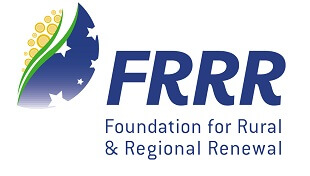
FRRR’s CEO Natalie Egleton says the old brand had served the organisation well, but it was time to change.
“Our aim was to find a new look that reflects the modern, dynamic organisation that FRRR is – and indeed that remote, rural and regional Australia is – and which expresses the connection to rural Australia that is so central to how FRRR works. We think that our new symbol certainly does that. We hope that you come to love it as much as we do,” she said.
While everyone will see it differently, the logo represents:
- four connected forces for good – philanthropy, government, business and community – coming together to create something strong and sustainable, supportive;
- the big picture, taking a helicopter view but also getting to the fine grain, into the detail; and
- forward momentum and positivity, as indicated by the arrows.
FRRR chose to make the primary colour green, for a sense of optimism, renewal and vibrancy, with secondary colours of burnt orange, yellow, sand and the blue of the sky, representing the diversity of remote, rural and regional Australia.
The Tablelands Region is around 150 km south-west of Cairns in Far North Queensland. Drought declared since May 2016, the community has been under significant pressure, specifically the grazing families in the west of the region. The residents in this area are located in remote settings, which can create challenges like difficulty accessing services, social isolation and lack of opportunities. There are very few regular social activities, as these areas are mostly cattle stations run by self-employed graziers.
In the past few years, the Tablelands Regional Council (TRC) and Northern Gulf Resource Management Group (NGRMG) have worked together to deliver a range of drought relief projects that contributed to connectedness, social wellbeing and increased access and awareness to support services.
They teamed up again to provide a series of gardening workshops to people in areas that have been drought declared to bring them together for new learning experiences that assist in their empowerment and resilience during difficult times, in a bid to promote social cohesion and wellbeing.
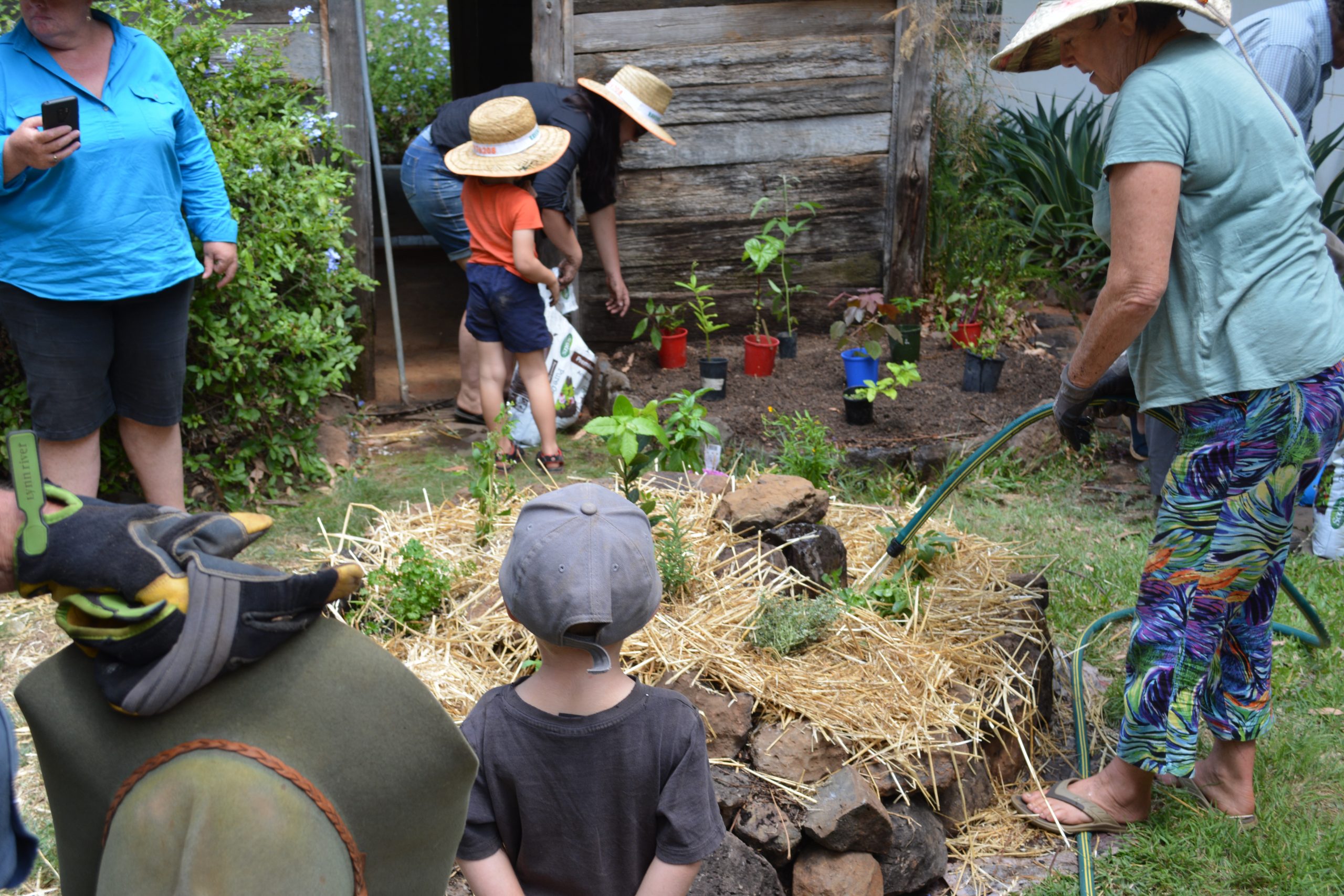
A $15,000 Tackling Tough Times Together grant, funded by the Tim Fairfax Family Foundation, enabled TRC to consult and engage gardening experts to design and deliver the workshops. The funding also covered ancillary costs such as the promotion of the events, catering and workshop materials.
In all, four drought-resilient gardening workshops were held, two at Pinnarendi Station and two at Woodleigh Station. The first workshops were held in November 2018 and were attended by 26 participants. The focus was on learning how to build a spiral herb garden utilising existing materials (upcycling) from around their properties. This included preparing the bed and understanding the design benefit for water-saving and planting complementary and seasonal plants, as well as making fertiliser out of existing resources.
The next round of workshops was held in May 2019, and 14 participants learnt to build wicking beds (self-watering gardens) and salad baskets out of hay bales.
Additionally, a morning/afternoon tea was held at each of the stations to discuss what they had learnt, evaluate the workshops and see how they would take any learnings into the future.
Project outcomes from the gardening workshops were significant for the participants who all stated in their evaluation that they had reconnected with old friends socially, and made new connections. From the beginning of the first workshop, participants were looking to increase their skills and knowledge. They reported that the benefit of receiving some plants to take home reinforced their commitment to translate their learnings to their gardens and build garden beds. The participants learnt to utilise their resources in different ways, which increased feelings of empowerment, as well as building resilience and sustainability.
Many of the participants have kept up their gardening and are noticing benefits for their whole family, including healthy living, self-confidence, new social connections, cost efficiency, self-reliance and wellbeing. Participating in the workshops has developed additional common ground between the participants and the community, which increases their social cohesion. Both groups decided to continue their gardening groups and rotate morning teas at each other’s gardens to maintain the connection and interest in their projects.
From all accounts, it certainly sounds as though the project succeeded in inspiring and empowering isolated communities to have some control to support their mental health with activities that are also coping strategies for personal challenges. One participant commented, “The workshops were wonderful opportunities for gardeners (of all levels) to get together; wellness at its best, thank you again!”
Thallon is a small town with a population of around 260, located 600 km west of Brisbane in south west Queensland. It’s a close-knit community and local residents like to stay in town, or move into town off surrounding farms, as they age.
However, there are no dedicated aged care facilities or purpose-built independent living units, so people either move into regular housing or go to larger centres. The community has agreed that this is a situation they want to rectify and has prioritised the creation of a community-owned independent living units.
The Thallon Progress Association (TPA) is lead the economic development organisation in town, and has members from all community organisations, including Council, represented.
They have a successful track record of getting things done for the community, including working with the Balonne Shire Council to equip the local recreation grounds with infrastructure required for Thallon to be designated an RV friendly town, as well as being the driving force behind the impressive local silo art and the newest ‘big thing’ – the giant statue of a Northern Hairy Nose Wombat, both of which are important tourism draw-cards.
Despite having no experience in this area, they agreed to act as the lead on the development of an Independent Living Unit complex to provide options for local citizens to age in place, with support of their family and friends.
Professional advice breaks down complexity
Anything to do with aged care is complex, and the TPA wisely decided their first step would be to get independent legal advice about setting up a fit-for-purpose legal entity to own land, develop the infrastructure and oversee the management of the complex and the services it will offer.
However, they needed external funding to cover the costs.They received an FRRR Caring for Ageing Rural Australians (CARA) grant of $7,032, funded by the Sylvia and Charles Viertel Charitable Foundation. This enabled them to engage local solicitors and obtain specialist advice on the most suitable legal structure for this aged-care initiative.
As a result, Thallon Community Services Ltd has been set up as a registered company. It has an ABN and is now registered as a Charity. The Company has a sole member (Thallon Progress Association) and an initial Board of three Directors, who report to the Association at their AGM.
A suitable parcel of land has been identified and now the real work begins, as Thallon Community Services Ltd aims to improve the well-being of all citizens by creating hope and opportunity, enhancing social inclusion and independence, addressing the impact of disadvantage and improving the districts’ liveability.
In their acquittal report, TPA acknowledged their appreciation of the grant, saying that it had allowed them to lay the foundations and establish a structure suitable to grow their strong community forward. They also indicated that without this grant, the project would not have gone ahead.
